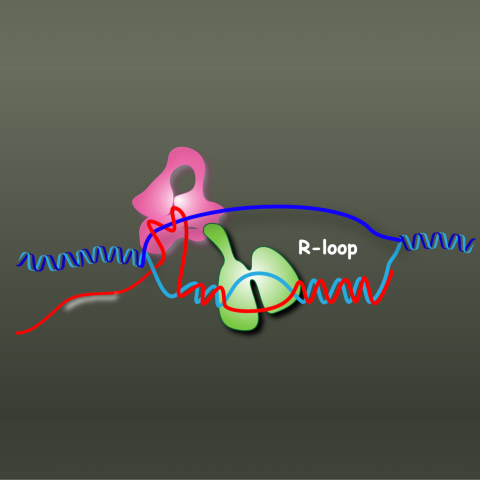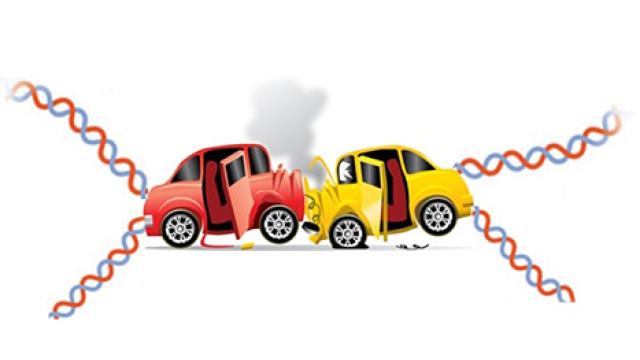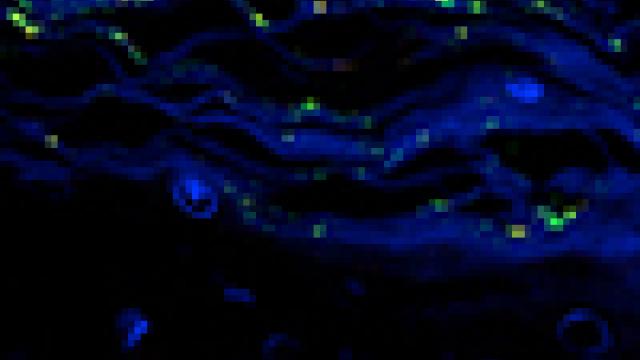
Malformed R-loops, made up of DNA and RNA, can disrupt key cellular processes, but an enzyme called topoisomerase 3B (TOP3B) in conjunction with a helicase (DDX5) can fix them. In this illustration, TOP3B (pink structure) and DDX5 (green structure) are working together to unwind and cut a tangled R-loop. The DNA strands are shown in light and dark blue, and the RNA strand is shown in red.
Image credit: Yves Pommier, M.D., Ph.D.
CCR researchers have uncovered how an enzyme called topoisomerase 3b (TOP3B) disentangles strands of DNA and RNA called R-loops via a process known as decatenation. The findings by Yves Pommier, M.D., Ph.D., Chief of the Developmental Therapeutics Branch, and his colleagues were published July 12, 2022, in Cell Reports.
R-loops are formed during transcription — when DNA is being copied by an RNA strand so that it can transmit instructions for building proteins. The loops influence cellular metabolism, mitochondrial replication, termination of transcription and chromosome segregation. Malformed R-loops can disrupt these key cellular processes and are becoming increasingly associated with a number of human diseases, including neurological disorders, autoimmune disorders and cancers.
Topoisomerases play an important role in R-loop development and activity as they are essential enzymes involved in unraveling and relaxing DNA. These enzymes also help determine when DNA is to be stored away or when it is needed. While vertebrates have six types of topoisomerases, only TOP3B can act on both DNA and RNA strands — such as those that make up R-loops.
To examine how TOP3B resolves malformed R-loops, Pommier and his colleagues forced the development of R-loops in laboratory cells with non-functioning TOP3B and treated the cells with the anti-cancer drugs (topoisomerase inhibitor camptothecin and the splicing inhibitor pladienolide-B). The depletion of TOP3B caused a significant increase in R-loop levels.
After then introducing TOP3B to the cells, the researchers discovered that the enzyme works together with a helicase, DDX5, to unwind the DNA-RNA strands so that it could cut and fix any tangled areas.
“I believe our research is the first to address how an enzyme such as a topoisomerase can help to disentangle these R-loop intertwines and how it does so in coordination with a helicase,” Pommier says. Their results also indicate that TOP3B is an important regulator that keeps R-loop levels in check. Future work for Pommier and his colleagues will involve exploring the decatenation system with biochemical experiments. “We hope that further exploring the TOP3B system will help us understand the diseases and the disorders that are associated with problematic R-loops.”


